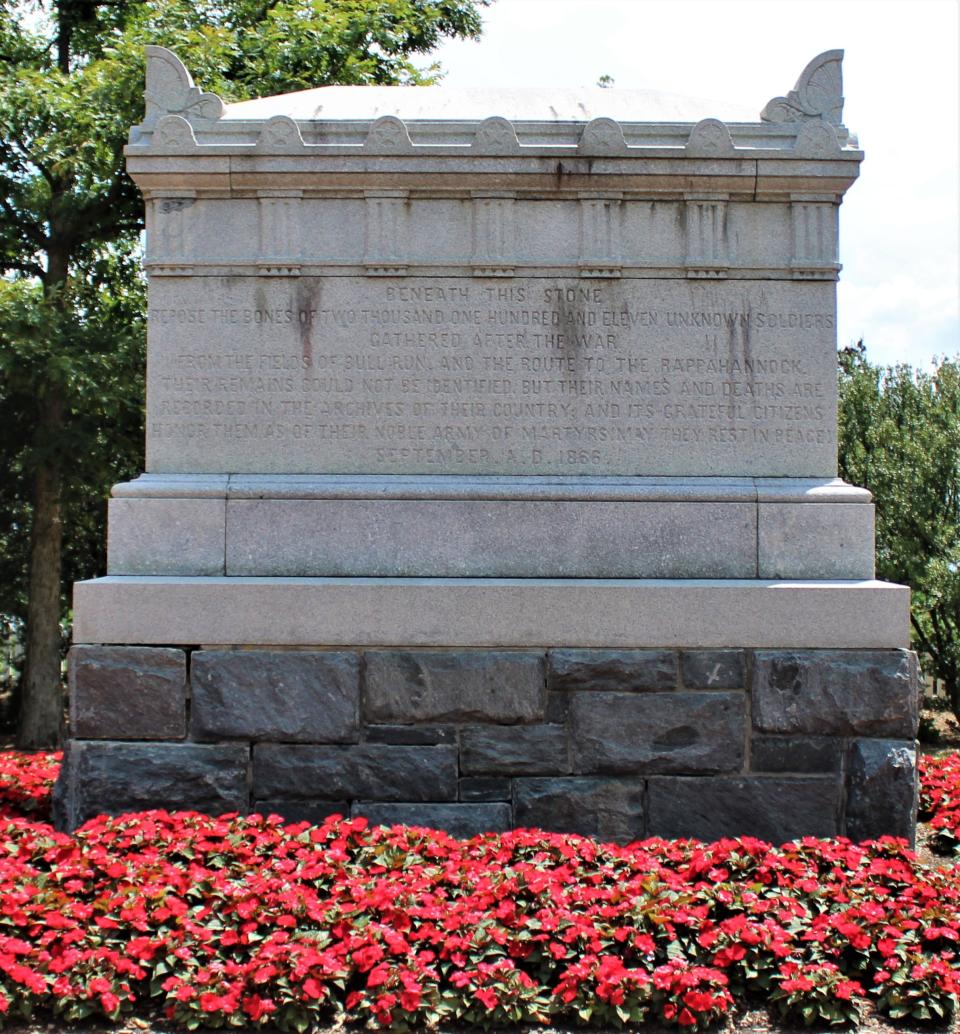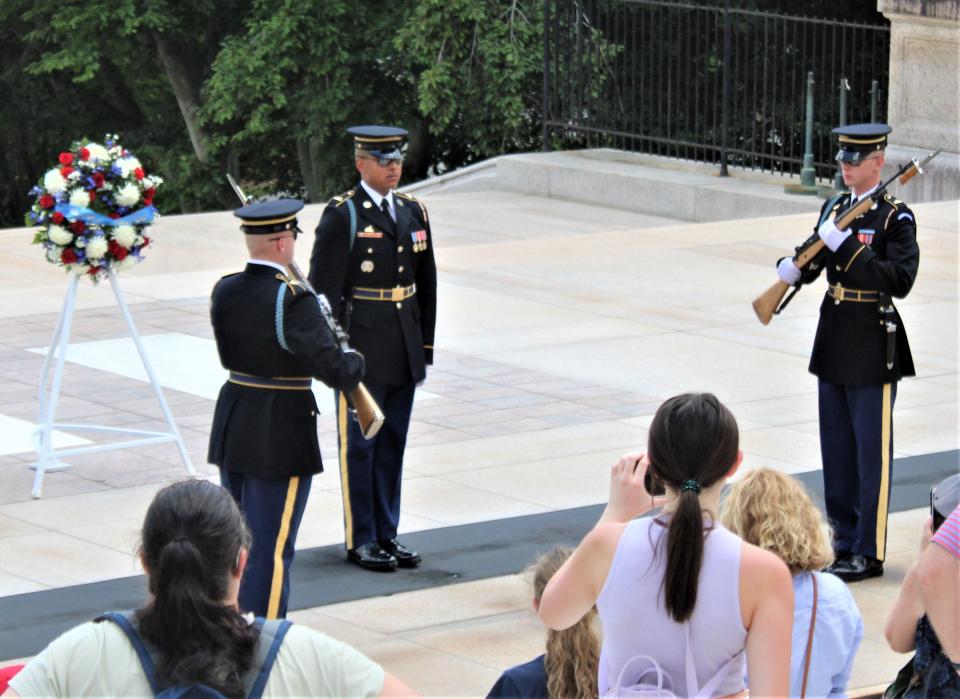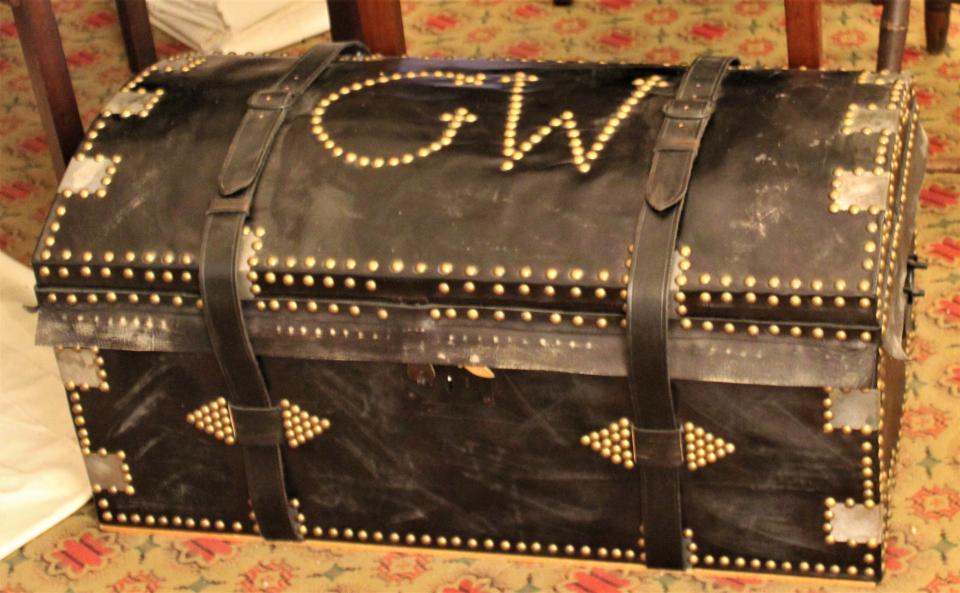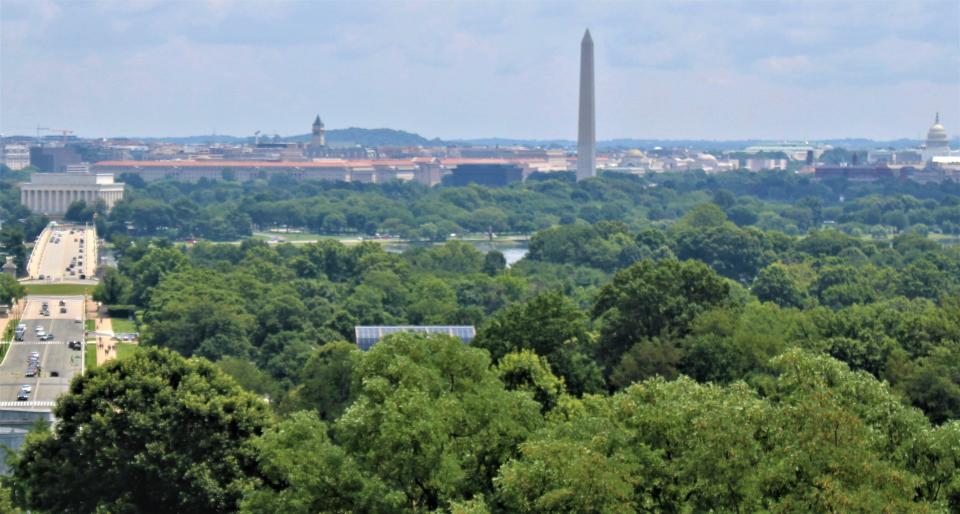Make Arlington National Cemetery your first stop when visiting Washington D.C.
- Oops!Something went wrong.Please try again later.
- Oops!Something went wrong.Please try again later.
- Oops!Something went wrong.Please try again later.
- Oops!Something went wrong.Please try again later.
- Oops!Something went wrong.Please try again later.
- Oops!Something went wrong.Please try again later.
- Oops!Something went wrong.Please try again later.
Oftentimes I try to place a bit of humor in my weekly columns. To get a chuckle here and there. Sometimes the attempt hits home and sometimes Laureen, my darling wife, will roll her eyes and say, “Back to the keyboard.”
Then there are times when frivolity is not acceptable.
When visiting the hallowed grounds of Arlington National Cemetery, across the Potomac from our Nation’s Capital, the visitor will understand that laughter is not accepted.
In fact, there are some signs spread out over the nearly 700 acres of rolling green lawns covered with tall green trees that advise the tourist that it is sacred ground and thus silence and reverence is called for.
As I glanced around the grassy plains that entomb over 400,000 graves, I thought that such signs should not be needed.

Laureen and I made the cemetery one of our first stops during our journey to Washington D.C.
How could we not? So many folks have fought for this wonderful country of ours, that it would be impossible not to visit where many were laid to rest. These soldiers, as all soldiers do, joined a cause they believed in, and many made the ultimate sacrifice for that belief. That belief for a free country called the United States of America.
The founding of Arlington National Cemetery was almost accidental, but hauntingly interesting.
On the highest hill of the cemetery is a beautiful Greek Revival home built in 1802 and completed in 1818 by George Washington Parke Custis, the grandson of George and Martha Washington. When his father, John Parke Custis had died, George and Martha raised Custis at Mount Vernon as their own son.
In 1802, Custis started building that Greek Revival home, now known as the Arlington House on land he had inherited from his late father.
Custis not only wanted to build the home for him and his wife, Mary Lee Fitzhugh, but also as a memory to his grandfather, George Washington, whom he truly loved and admired.
The couple had four children, but only one lived to adulthood, Mary Anna Randolph Custis. Later, Mary Anna married a man by the name of Robert E. Lee.

And the plot thickens.
Lee was the Superintendent of the Military Academy at West Point, but when war broke out between the North and South in 1861, Lee resigned his commission and took over the reins of running the armed forces of the Commonwealth of Virginia. Later he became the commander of the entire Army of Northern Virginia during the Civil War.
A little-known fact was Lee did not believe in secession but when it occurred, he felt the need to fight on the side of Virginia, his homeland.
With the property, which is now where the cemetery is located, in such a strategic location right across the Potomac River from Washington D.C, the federal troops felt rather vulnerable from Lee and his army stationed there.
On May 3rd, Brig. Gen. General Irvin McDowell invaded Arlington and Alexandria, capturing the high ground and forcing Lee’s wife, Mary, to flee Fairfax County.
Though the Civil War was only supposed to last a month, according to both sides, the war carried on and became the bloodiest war in American history with over 750,000 soldiers dead, be that Union or Confederate.
With such high body counts, as horrible as it sounds, local cemeteries were overburdened. There was no place to lay the dead for their eternal rest.
By late 1863, the U.S. military decided to use the land surrounding the Arlington Estate, as it was referred to then, for additional acreage for the funerals of the fallen.
A staff member at the cemetery told us that the rumor is the Union Army felt it befitting to bury its dead at the estate of the Southern General who had taken the side of those who wanted to destroy the union.
As more and more land was needed for burials (and getting more and more land was not that easy), the United States Government decided to foreclose on the entire estate for delinquent property taxes owed by Mary Custis Lee, who had inherited the house and property from her father.
An agent of Mrs. Lee did try to pay the money for the back taxes, but he was turned away by the tax collector.
“No deal for you, agent who represents someone we no longer find favor with,” it is rumored to have been said by a man with a French accent.
Those French.

In December of 1882, the U.S. Supreme Court ruled in favor of Lee’s son and the property was returned to the family as the court believed the property had been confiscated without due process.
In March of 1883, Custis Lee then sold the property to the federal government for what in today’s money would be nearly $4,000,000.00. There was even a signing over ceremony for the land overseen by then Secretary of War Robert Todd Lincoln. Yes, THAT Todd Lincoln.
President Herbert Hoover conducted the first National Memorial Day ceremony at the cemetery on May 30, 1929.
There is so much history and sadness all wrapped together, that Laureen and I never needed a sign to suggest we don’t run and scamper among the thousands upon thousands of white marble headstones.
Since the weather was a Washington D.C. summer, we were drenched when we arrived and walked into the visitor’s center.
“Want a water bottle?” Laureen asked me, as she headed to the gift shop - no surprise there.
“And another shower,” I replied.

We decided to take a tram tour, since to see what we wanted to see would require walking about five miles in 96 degrees and a humidity equal to that of the Peruvian rainforest.
The line for the tram was long, no one wanted to walk in the mugginess of the early afternoon heat. Especially, when a couple of staff members were seen pushing a tourist in a wheelbarrow toward the air-conditioned visitor’s center.
“He tried to do it all on foot,” one of the staff members may have said.
Our tram guide, a young woman by the name of Chrissy, was a font of knowledge when it came to the cemetery and what it meant for her and the others who worked there.
“It is not really a job for us,” Chrissy said, as the tram rumbled over the roadway, “It is an honor to be in the presence of so many heroes laid to rest here.”
As the tram moved on, Chrissy would point out certain special locations. “Up there, behind that group of trees is a reddish granite sarcophagus where Robert Todd Lincoln is buried.”
“Up the road a bit is where many of the Supreme Court Justices are buried, in fact, that large black marble tombstone is where the late Justice Ruth Bader Ginsburg is buried.”
There were five stops along the tram trail that we jumped off at: President John F. Kennedy’s gravesite with the eternal flame, U.S. Coast Guard Memorial, General Pershing gravesite, the Arlington House, and the Memorial Amphitheater/Tomb of the Unknown Soldier.
There is also another memorial to unknown soldiers at Arlington House. It is where over 2,000 Union and Confederate soldiers are buried together - their identities unknown but their individual valor is never questioned.
All sites located at the cemetery are filled with honor and respect.
We watched the changing of the guard at the Tomb of the Unknown Soldier and marveled at the precision each of the three soldiers maintained marching, spinning their rifles, shouting orders, while ignoring the large group of looky-loos staring at them.
It is a beautifully choreographed ceremony that begs for silence. Not a voice could be heard - I don’t believe I even heard a bird tweet in the nearby trees.
While strolling through the Arlington House, we were impressed by the original decor and furniture in each of the rooms, including a large traveling trunk that belonged to President George Washington.
One room puzzled us at first, the seance room until we were told that spirituality, that world dealing with the spirits from past lives, was a huge business during the19th century.
Since Laureen feels things that I don’t, I asked her, “Do you feel anything?”
“I feel better since the house is air conditioned,” she replied.
Finally, I felt the same as Laureen.
We spent nearly four hours walking, riding, sitting, and contemplating Arlington National Cemetery, and our conclusion was simple.
Every American should visit and say thank you.
This article originally appeared on Victorville Daily Press: Arlington National Cemetery a must see for any Washington D.C. visit

